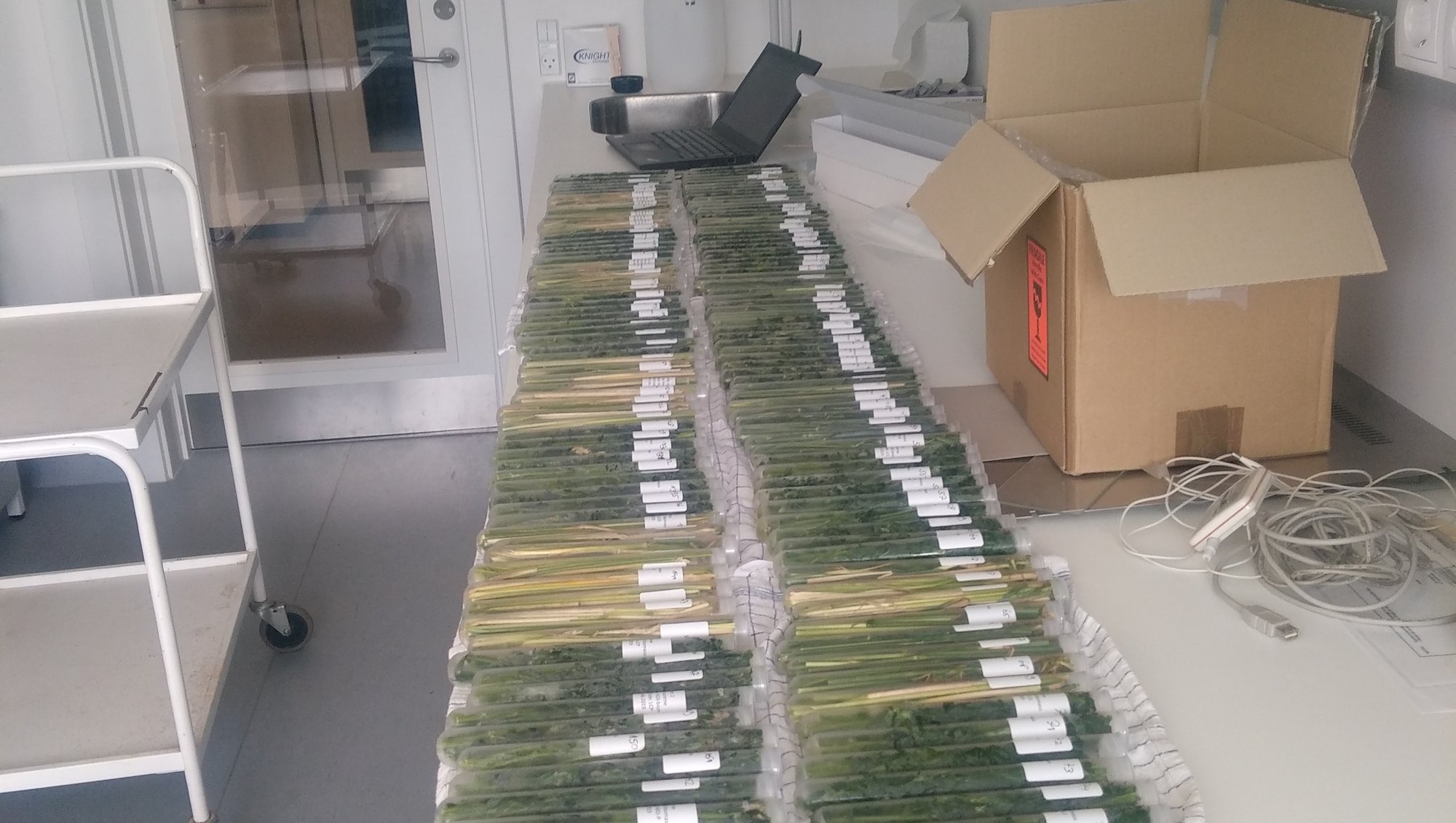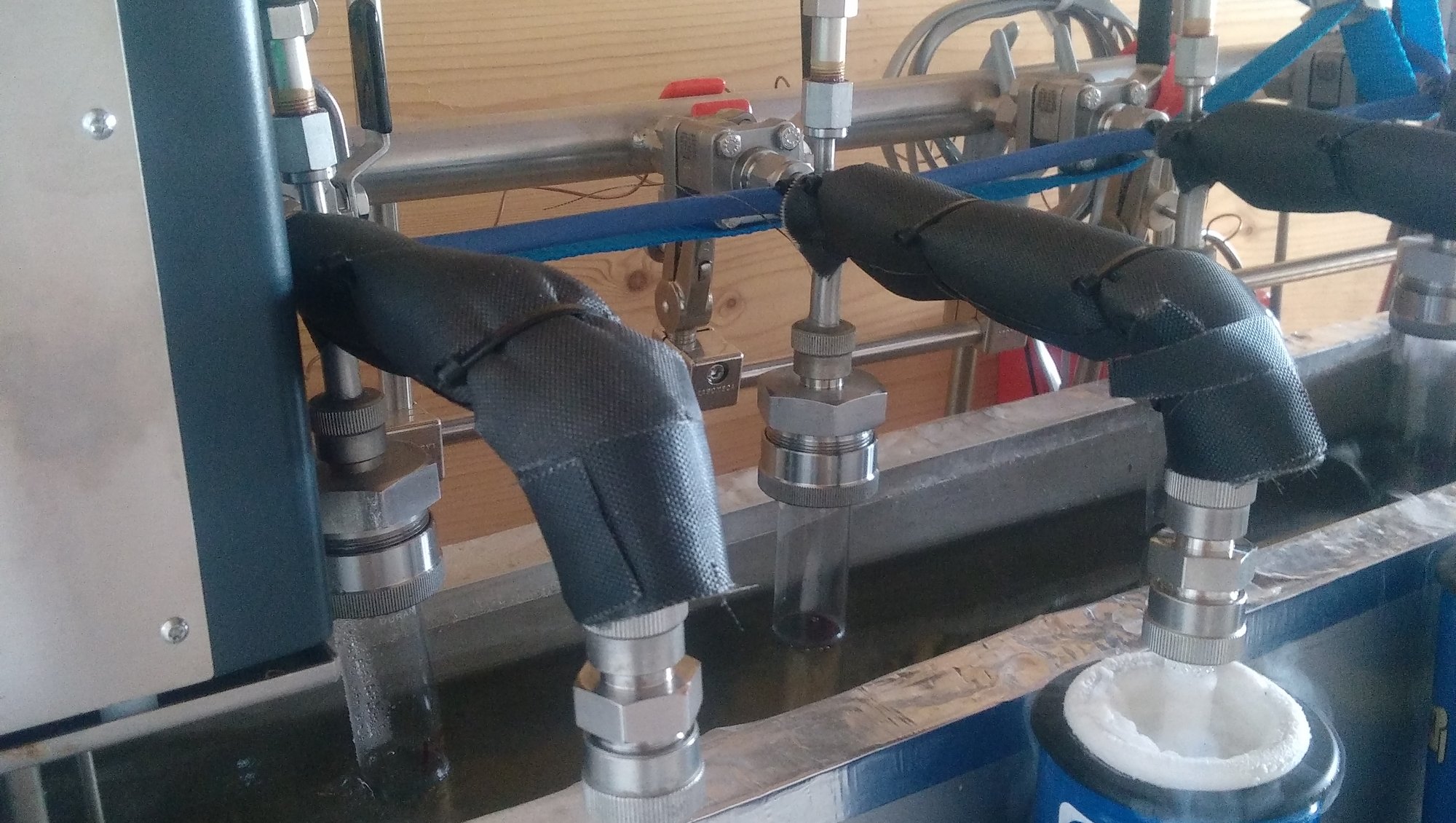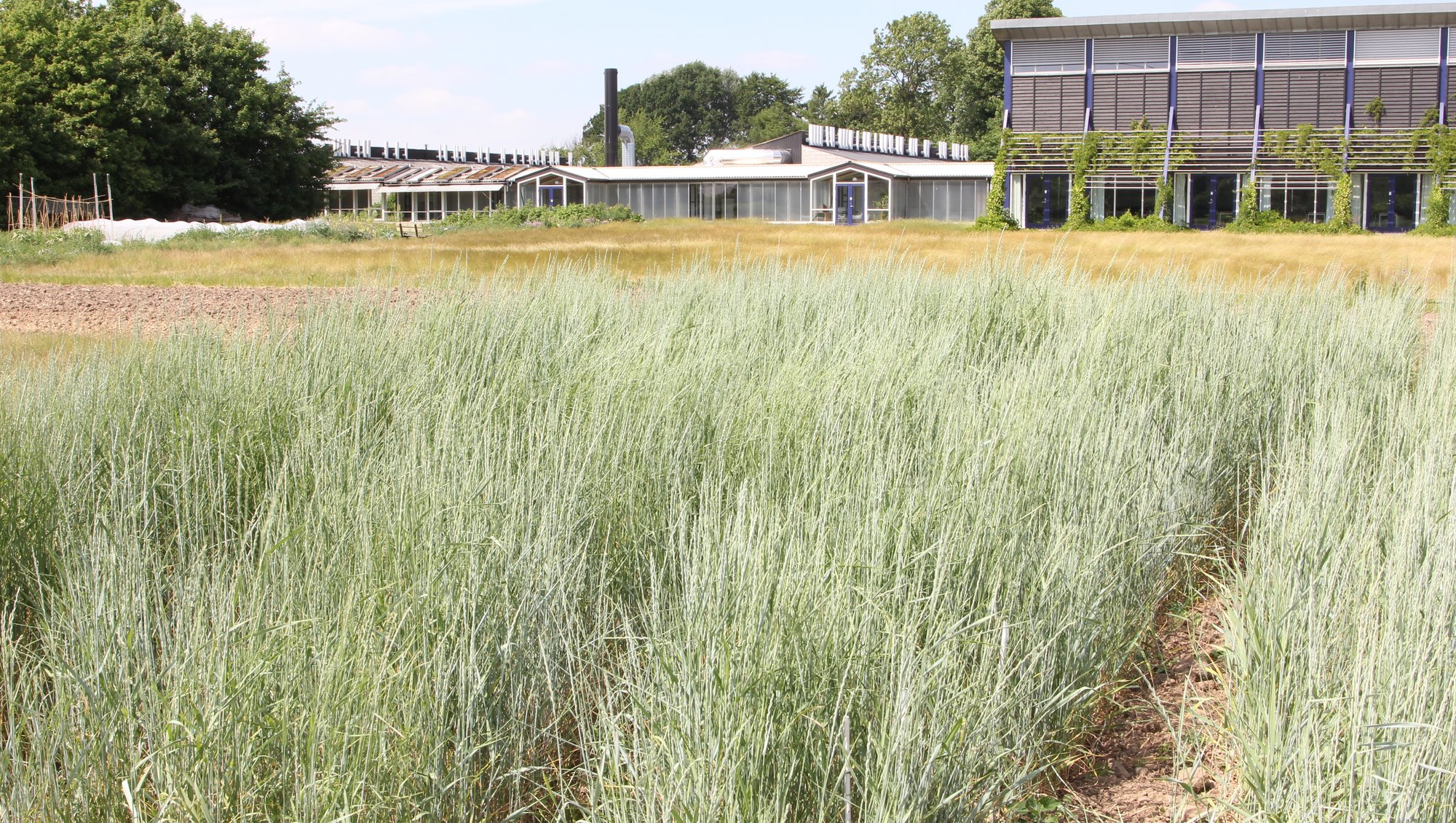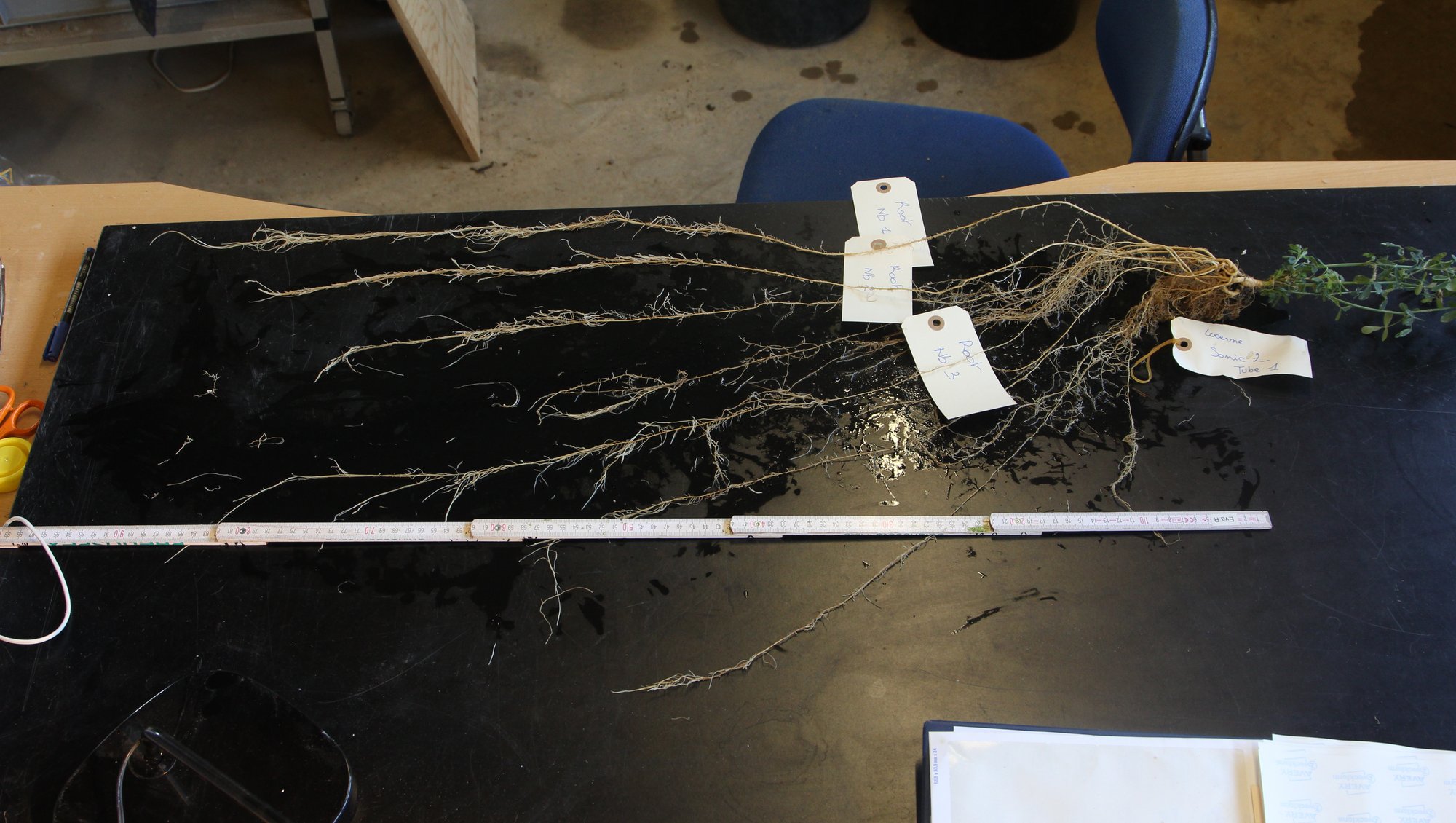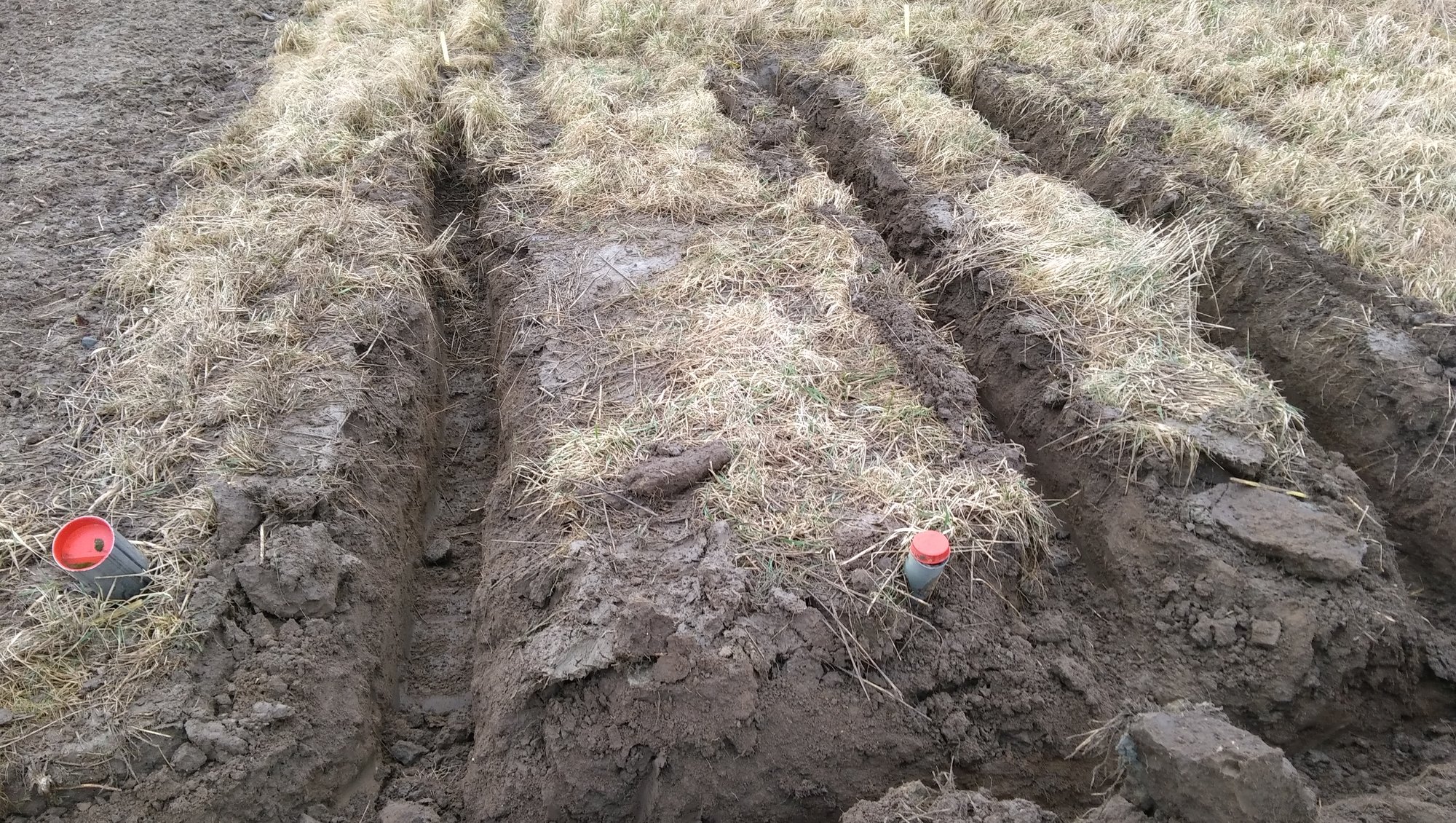Corentin Clement
Corentin Clément did his PhD study at the Department of Plant and Environmental Sciences, University of Copenhagen. Corentin started his studies at the University of Copenhagen on June 1st 2017 and completed them in March 2021.
Understanding deep-water uptake and perennial cropping systems
In the near future, food production must increase while adapting to climate change and reducing the environmental impact of current agricultural systems. In addition, water, the most important yield-limiting factor worldwide, will increasingly restrict food production in the future due to rainfall shortage and increase in human consumption. Therefore, there is urgent need to investigate alternative crops and farming concepts that could meet both production and environmental challenges. Perennial crops, with denser and deeper root system could use water and soil resources, in deep soil layers that are logically inaccessible to crops with shallower root system. From their extensive root systems, year-round ground cover and lower inputs requirements, perennial crops tend to provide ecosystems benefits such as soil carbon sequestration, reduced nutrient leaching and increased subsoil water uptake in comparison to annual cropping systems. However, research studies on deep roots and perennial crops in the field are yet limited. The PhD study of Corentin focused on alfalfa and intermediate wheatgrass, two deep-rooted perennial crops, and sought to address both knowledge gaps by gathering physiological knowledge on deep root growth and water uptake while studying the potential of perennial crops.
Research objectives
The objective of Corentin's PhD study was (1) to understand the root growth and water uptake capacity of alfalfa, Medicago sativa and intermediate wheatgrass, Thinopyrum intermedium down to 2.5 m soil depth, grown under field conditions, (2) to characterize root anatomical variations associated with crop type, root type and increasing soil depth and their influence on root hydraulics and (3) to investigate the relationship between rooting depth and water uptake in order to better understand the factors influencing deep water uptake in the field and overtime.
Research methods used in the field
Corentin monitored root growth using minirhizotron tubes, ingrowth cores and soil coring methods down to 2.5 m at the Copenhagen Experimental Farm (Højbakkegård, Taastrup, DK). In parallel, he used stable isotope technique and TDR (Time-Domain Reflectometry) sensors to monitor crops and root water uptake at 0.75, 1.5 and 2.5 m soil depth. All data were compiled in a soil-plant-atmosphere water flow model (HYDRUS-1D) to reach more quantitative conclusions. Corentin performed its root anatomical study at the Penn State Root Lab, (Penn State University, USA) by using laser ablation tomography and image analysis on root segments sampled in the field and in other growth environments (rhizoboxes, pots, solution culture).
Main findings
For both crops, axial hydraulic conductance decreased with soil depth and alfalfa roots had greater axial hydraulic conductance in comparison to intermediate wheatgrass roots, especially at depth. Both crops presented roots down to 2.0 m soil depth that were active in terms of water uptake. Alfalfa had greater root length at depth and absorbed twice as much water below 1 m soil depth, than intermediate wheatgrass. For both crops, contribution of deep soil layers (i.e. 1.5 – 2.0 m) increased substantially (i.e.>30%) under dry conditions. Higher stomatal conductance, greater root length at depth and higher axial hydraulic conductance are some of the physiological and anatomical characteristics identified in this study, that explain the greater use of water below 1 m soil depth by alfalfa in comparison to intermediate wheatgrass.
Others involvements
Corentin has co-supervised two master students on their thesis projects related to deep-rooting, crop water uptake and perennial cropping systems.
- Joost Sleiderink, The Role of the Deep Roots of Perennial Cereal Kernza in a Drying Climate. MSc Thesis. https://orgprints.org/37949/
- Kyriaki Adelais Boulata, In preparation.
Publications:
-Corentin Clément, Hannah M. Schneider, Dorte Bodin Dresbøll, Jonathan P. Lynch, Kristian Thorup-Kristensen. (In-prep). Root and xylem anatomy varies with root length, root order, soil depth, and environment in two perennial crops.
- Corentin Clément, Joost Sleiderink, Simon Fiil Svane, Abraham George Smith, Efstathios Diamantopoulos, Dorte Bodin Desbrøll, Kristian Thorup-Kristensen. (In-prep). Deep water uptake of alfalfa Medicago sativa and intermediate wheatgrass Thinopyrum intermedium. Physiological and methodological complexity in the field. Results using diverse methods applicable in the field.
-Corentin Clément, PhD thesis (Submitted), Deep-water uptake of perennial crops. A case study on intermediate wheatgrass and alfalfa.
Figure 1. Consecutive cross section of intermediate wheatgrass (A-C; left panel) nodal axial root and alfalfa (D-F; right panel) axial root at 20, 50 and 90 cm from the soil surface at 107 days after sowing grown on a sandy loam. Annotations refers respectively to Aerenchyma (A), Central pith (Cp.), Exodermis (Ex.), Endodermis (End.), MetaXylem vessel (MX), Cortex area (C), Stele area (S), Periderm (P), Secondary Parenchyma (SP) and Root Cortical Senescence (RCS). Note: for photo (A) decision was made to present a root with little root cortical senescence and aerenchyma in the basal part to reflect the whole root anatomy of intermediate wheatgrass root.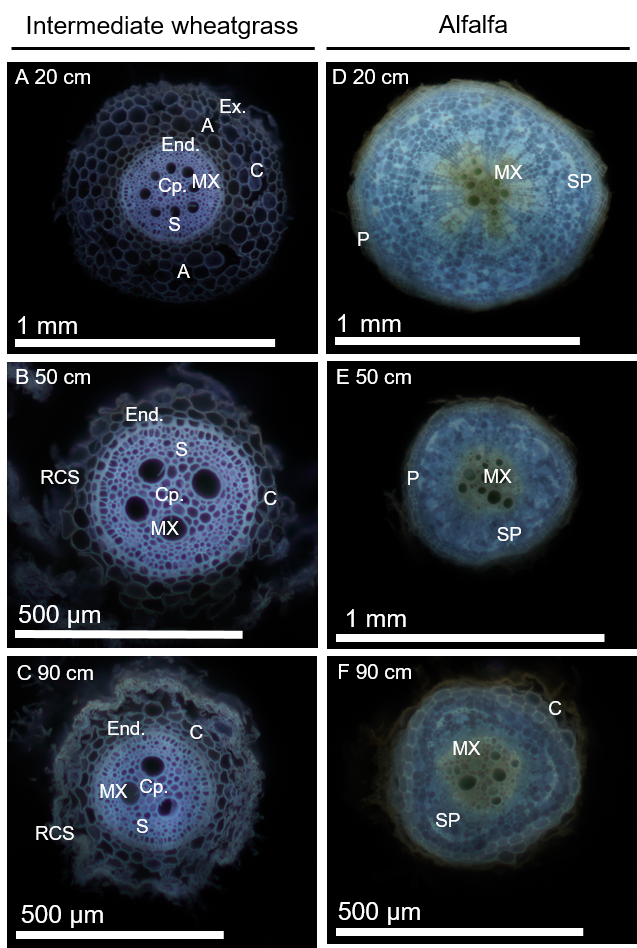
Find out more
- Corentin and his work (researchgate.net)
- Research activities
- Research facilities
- Who to contact

